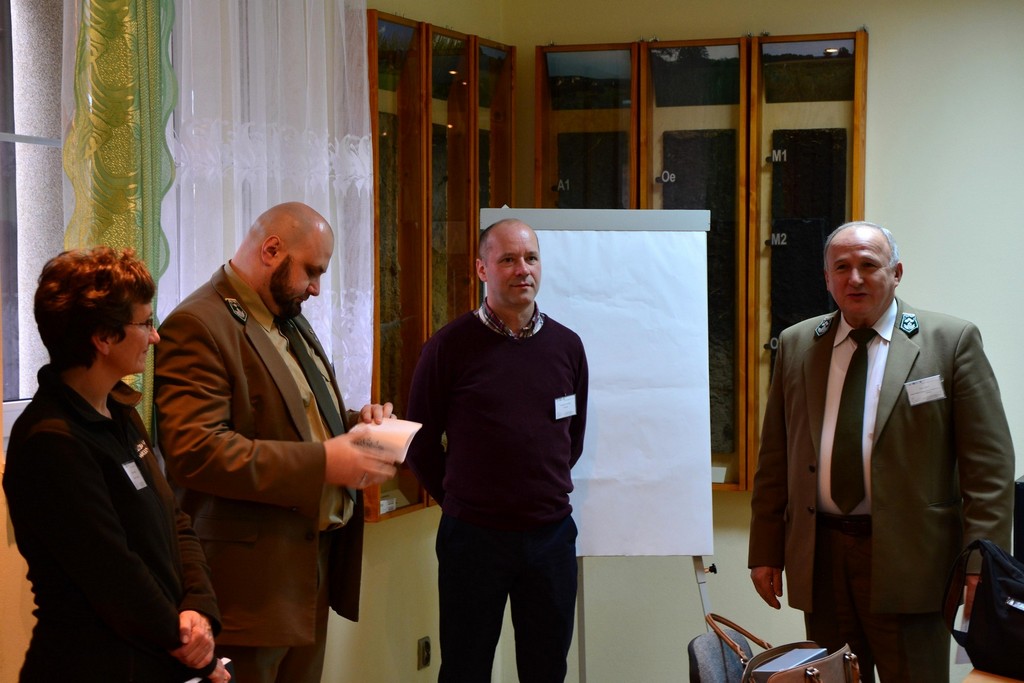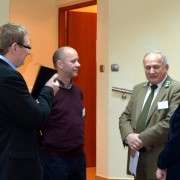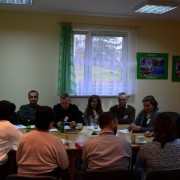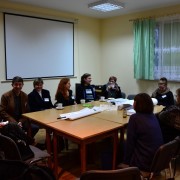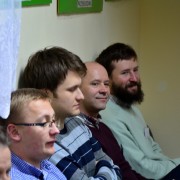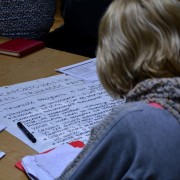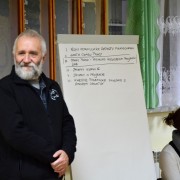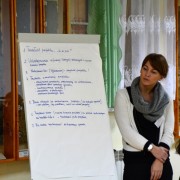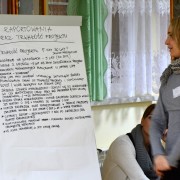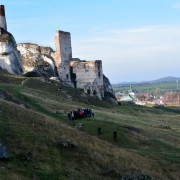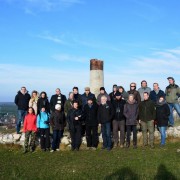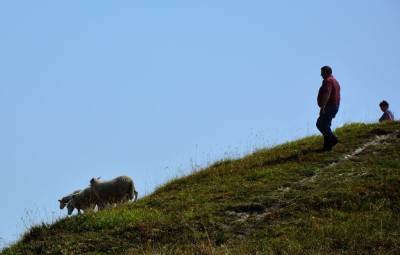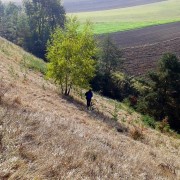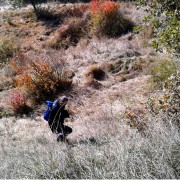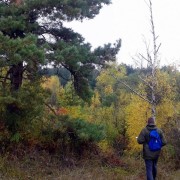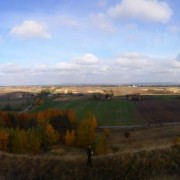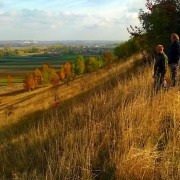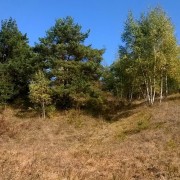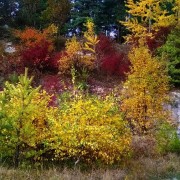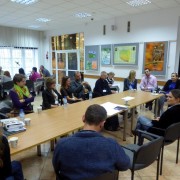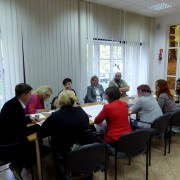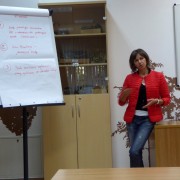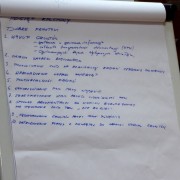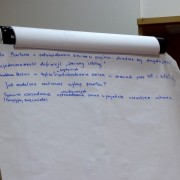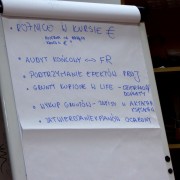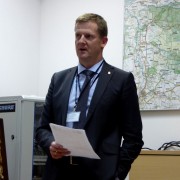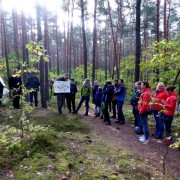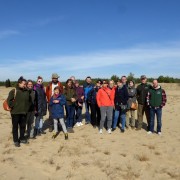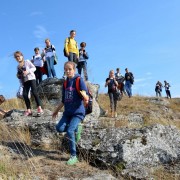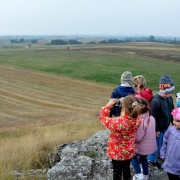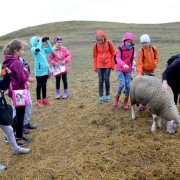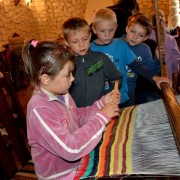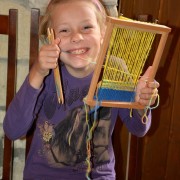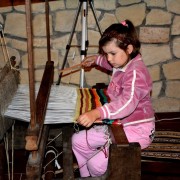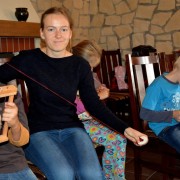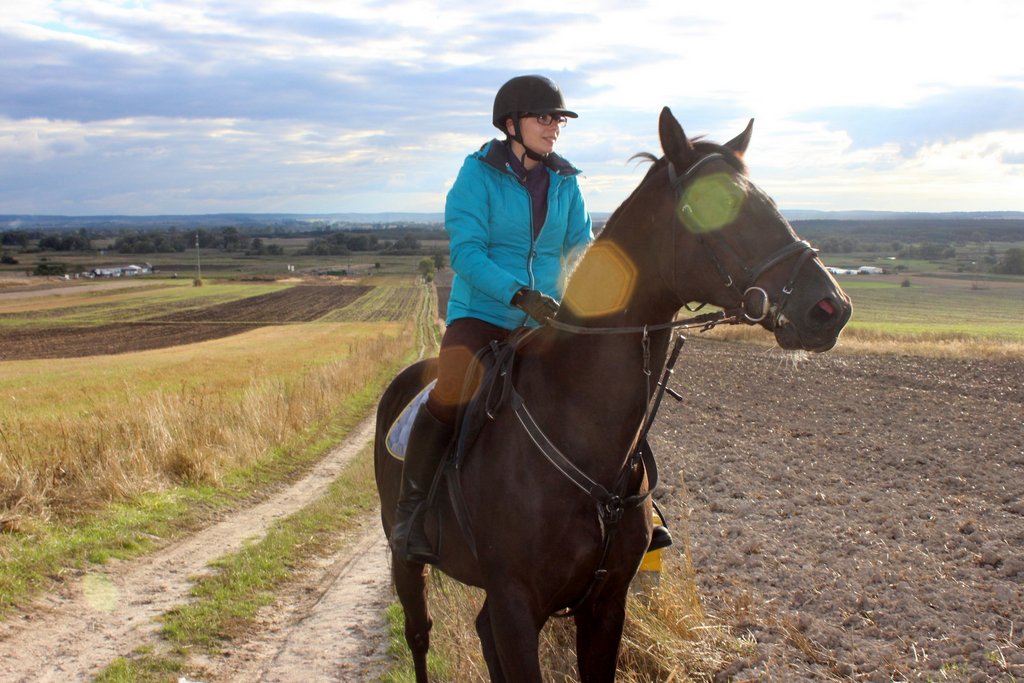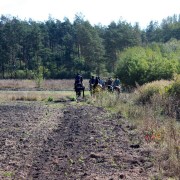Dominik
The second meeting of teams performing LIFE projects
Several dozen people from various parts of Poland and long discussions devoted to the projects implemented, to the regulation interpretation, reports and settlements, inspections and the „afterlife” of projects after the EU funding is over. This was the course of the second meeting of teams performing LIFE projects. It was held on 3 and 4 December at the feet of the castle in Smoleń, in welcoming interiors of the Educational and Scientific Centre, belonging to the Silesian Landscape Park Complex.
We came from various parts of Poland to discuss the finance, performance and reporting, as well as project sustainability and settlements in three teams in an open formula. This exchange of experience was even more valuable as the progress of different project differs, from the ones in their initial phase, through the ones which submitted their midterm reports, to the ones awaiting approval of their final settlement.
As the financial settlement forms were changed, the information we could obtain from more experienced colleagues is impossible to overestimate. How to settle remuneration? How to cope with dishonest vendors and contractors? How to document project sustainability? The answers to those and many other questions were sought together, also thanks to the presence of the EU Monitor, Mr Stanisław Tworek.
Our group was most interested in exchanging experience related to sheep grazing and protection of xerothermic grassland. Similar projects are performed in the voivodeship of Silesia and Lesser Poland. This is why the trip and site inspection to the flock grazing site in Olsztyn near Częstochowa was even more attractive for us. We could observe how efficient the sheep are with respect to protecting xerothermic grassland against expansion of other plants.
Drugie spotkanie zespołów realizujących projekty LIFE
Kilkadziesiąt osób z całej Polski i wielogodzinne dyskusje o realizowanych projektach; o interpretacji przepisów, o sprawozdaniach i rozliczeniach, o kontrolach i „drugim życiu” projektów już po zakończeniu finansowania z Unii Europejskiej. Tak przebiegało drugie spotkanie zespołów realizujących projekty LIFE. Odbyło się ono 3 i 4 grudnia u podnóża zamku w Smoleniu, w gościnnych progach Ośrodka Edukacyjno – Naukowego należącego do Zespołu Parków Krajobrazowych Województwa Śląskiego.
Przyjechaliśmy z całej Polski aby w trzech zespołach, w otwartej formule dyskutować o finansach, realizacji i raportowaniu oraz trwałości i rozliczaniu projektów. Była to wymiana doświadczeń tym cenniejsza, że stopień zaawansowania poszczególnych projektów jest bardzo różny – od takich, które dopiero się rozpoczynają, poprzez takie, które złożyły sprawozdania śródokresowe, aż po takie, które czekają na przyjęcie ostatecznego rozliczenia.
Ponieważ zmianie uległy formularze rozliczeń finansowych, informacje jakie mogliśmy uzyskać od bardziej doświadczonych koleżanek i kolegów były nie do przecenienia. Jak rozliczać wynagrodzenia? Jak radzić sobie z nierzetelnymi kontrahentami i wykonawcami?Jak dokumentować trwałość projektu? Na te i wiele innych pytań szukaliśmy odpowiedzi wspólnie korzystając przy tym z obecności Monitora z ramienia Unii Europejskiej – p. Stanisława Tworka.
Naszą grupę najbardziej interesowała wymiana doświadczeń dotyczących wypasu owiec i ochrony muraw kserotermicznych. Podobne projekty są realizowane w województwie śląskim i małopolskim. Tym ciekawsza była dla nas wycieczka terenowa i wizja lokalna w miejscach wypasu stada w Olsztynie k/Częstochowy, gdzie można było obserwować jak skutecznie owce chronią murawy kserotermiczne przed ekspansją innej roślinności.
Talk to Aleksandra and Waldemar Siepracki who grazed sheep in Ostoja Stawiany
Have you bred sheep before?
We used to have some animals but a long time ago and it was not any large farm.
This summer you grazed 30 sheep and this is a true flock. Did you not have any problems with them?
The animals are like people. If you treat them right, they are also quiet. It turned out soon that the flock had one female leader. When she bleated, they all obeyed and when she went, they all followed. People came, watched and asked questions. The whole families came. It became clear that the flock of sheep was attractive not only for children but also adults.
This season there will be new sheep…
The young will come but they will also become attached to a human. One week after they came I could call them and they would come. I must admit I got attached to them. I seam to miss something. I am sad without them. The dog is also sad.
Did the dog get attached to the flock?
That is obvious. He would run after them and when they fell into a hole, the dog led them out. They were so calm. When we spread a line, they knew they could not cross it and would go one by one in a line.
Are you willing to continue sheep growing after LIFE project finishes?
That is obvious. And I am going to expand the flock. I own meadows so I will be able to graze them not only on the grassland. I will erect a sheepfold and they will have a place to stay in winter. A man learns. I learned to form hooves and I will learn everything.
But you were not eager to try shearing….
You may cut a sheep and the shearer said it was a nervous breed.
Was it worthwhile participating in the project?
It was the first season and I must admit we were apprehensive. What it all will be like and if nothing bad happens to the sheep, if they do not fall sick, if no dogs frighten the flock or attack it, but the season is over and everything was all right. My colleagues first laughed but today they are all interested in the project and sheep (Aleksandra adds).
Rozmowa z Aleksandrą i Waldemarem Sieprackimi, którzy wypasali stado w Ostoi Stawiany
Czy kiedyś w przeszłości hodowali Państwo owce?
– Mieliśmy kiedyś kilka sztuk, ale to lata temu i nie była to jakaś wielka hodowla.
Tego lata wypasał Pan 30 owiec, to już całe stado. Nie było z nimi kłopotu?
– Ze zwierzętami jak z człowiekiem – jak z nimi dobrze się postępuje to i one są spokojne. Okazało się szybko, że w stadzie była jedna owieczka co była kierowniczką. Jak ona zbeczała to wszystkie jej słuchały, jak ona szła to inne za nią. Ludzie przyjeżdżali, oglądali, dopytywali się co i jak. Całe rodziny przyjeżdżały. Okazało się, że takie stado owiec to atrakcja nie tylko dla dzieci, ale i dla dorosłych.
W tym sezonie będą nowe owce…
– Jak przyjdą młode to też się do człowieka przywiążą. Już po tygodniu jak na nie zawołałem to do mnie biegły. Przyznam, że się do nich przywiązałem. Czegoś człowiekowi brakuje. Smutno bez nich. Pies też smutny.
Pies też się przywiązał do stada?
– No oczywiście. Biegał za nimi, a jak raz wpadły do dołu to pies je wyprowadził. Zresztą były takie spokojne – jak rozpięliśmy sznurek to wiedziały, że nie wolno go przekraczać i chodziły równiutko jedna za drugą.
Czy jest Pan zdecydowany kontynuować hodowlę owiec po zakończeniu projektu LIFE?
– Oczywiście. I będę powiększać stado. Mam swoje łąki więc będę mógł wypasać nie tylko na murawach. Postawię owczarnię i będą miały gdzie zimować. Człowiek się uczy. Już nauczyłem się formować kopyta, z czasem człowiek nauczy się wszystkiego.
Ale do strzyżenia się pan nie garnął….
A bo można owieczkę skaleczyć, a ten co strzygł mówił, że to nerwowa rasa.
Warto było przystąpić do projektu?
To był pierwszy sezon i nie powiem, że się nie obawialiśmy. Jak to będzie i czy coś się tym owieczkom nie stanie, czy nie będą chorować, czy jakieś psy nie wystraszą stada albo ich nie zaatakują, ale sezon minął i wszystko było w porządku. W pracy to najpierw się śmiali, a teraz wszyscy zainteresowani projektem i owcami (dodaje Pani Aleksandra).
Preparation for tree felling
The preparatory works on the plots covered with the project to protect thermophilic grassland were completed. The sunny weather was conducive to field works. During a site inspection we visited the posts where the sheep grazing is planned. We counted trees and shrubs in the habitats which will be felled. Mostly, those are seedlings and small trees, with diameter not exceeding 15 cm. Before the woodcutters start their work, we had to confirm which trees and shrubs grew in the habitat and what the grassland condition was. Incidentally, we discovered several instances of blooming Carlina acaulis (stemless carline thistle) and Carlina onopordifolia Besser.
Except for one sand-grown grassland, all the other xerothermic grasslands are included in the protection task plan for Natura 2000 Nida Valley and Ostoja Kozubowska, approved by the Director General for Environmental Protection in Kielce. Thanks to that, according to the Wildlife Protection Act, there is no need to obtain a permit for tree felling and shrub removal.
Przygotowania do wycinki drzew.
Zakończono prace przygotowawcze na działkach objętych projektem ochrony ciepłolubnych muraw. Słoneczna pogoda sprzyjała pracom terenowym. Podczas wizji lokalnej obeszliśmy stanowiska, na których planowany jest wypas owiec. Policzyliśmy drzewa i krzewy rosnące na siedliskach, a tym samym przeznaczone do wycinki. W większości są to siewki i małe drzewa, których obwód nie przekracza 15 centymetrów. Zanim jednak przystąpią do pracy drwale musieliśmy potwierdzić, które drzewa i krzewy rosną w siedlisku i w jakim stanie są murawy. Przy tej okazji odkryliśmy kilka stanowisk kwitnącego dziewięćsiła bezłodygowego i popłocholistnego.
Z wyjątkiem jednej murawy napiaskowej wszystkie pozostałe murawy kserotermiczne są ujęte w zatwierdzonym przez Regionalnego Dyrektora Ochrony Środowiska w Kielcach planie zadań ochronnych dla obszarów Natura 2000 Dolina Nidy i Ostoja Kozubowska. Dzięki temu, zgodnie z przepisami ustawy o ochronie przyrody, nie ma więc konieczności uzyskiwania zezwolenia na wycięcie drzew i usunięcie krzewów.
Pierwszy wypas owiec
Meeting of LIFE NATURA project Beneficiaries.
The major themes of the meeting of LIFE NATURA project Beneficiaries, held on 1 and 2 October this year in the seat of Kampinos National Park in Izabelin, included the final reports, settlements with the National Fund for Environmental Protection and Water Management and the methods to minimise FX risk between EUR and PLN.
The conference, apart from our representatives, was attended by the representatives of e.g. the National Fund for Environmental Protection and Water Management, Regional Directorate for Environmental Protection in Krakow, Katowice and Szczecin, Natural Landscape Park Complex for the Voivodeship of Silesia, Forest Research Institute, Słowiński, Wigierski, Pieniński and Kampinos National Parks.
The open space formula was a great idea. Such conferences enable to involve all participants in direct dialogue. They deal solely with the most important aspects and lead to accurate conclusions. Thanks to the adopted formula, we could get responses to most of our questions and talk about the legal and accounting details related to LIFE project performance. However, the meeting was primarily a great platform to talk to other Beneficiaries, many of whom have much greater experience.
Educational workshops.
The next stage of educational activities has been completed. Close to 350 children from forms 0 to 6 from Kielce and Kije municipality participated in the workshops lasting for seven days in Samorządowa Instytucja Kultury „Kasztelania” in Kije. During the field part of the workshops the children could watch sheep grazing in Ostoja Stawiany on Sobótczana Mountain and listened to information on thermophilic plants creating xerothermic grassland. They could also see particular plant species. Then, during the class work, they learned about wool applications. Young people tried to use a spindle and a spinning wheel. They tried weaving with pins, rigid heddles and looms. Each group left a colourful strip of woolen textile made by themselves. What they liked most, however, was making bracelets and pompoms which could be taken home.
First mounted patrols.
The first mounted patrols planned for autumn this year have already been done. Having got acquainted with the horses and completing a short warm-up in the paddock of Ludowy Klub Jeździecki in Pińczów, the riders from Oxer club set off. They penetrated the area on Pińczowski Projection where sheep are to graze next year. Mounted patrols in autumn landscape were a chance to get acquainted firstly with LIFE+ project, wildlife conservation, natural values of xerothermic grassland and geological history of Nidziańska Basin. Two illegal waste dumps were detected during the patrol which were reported to the ground owner.













